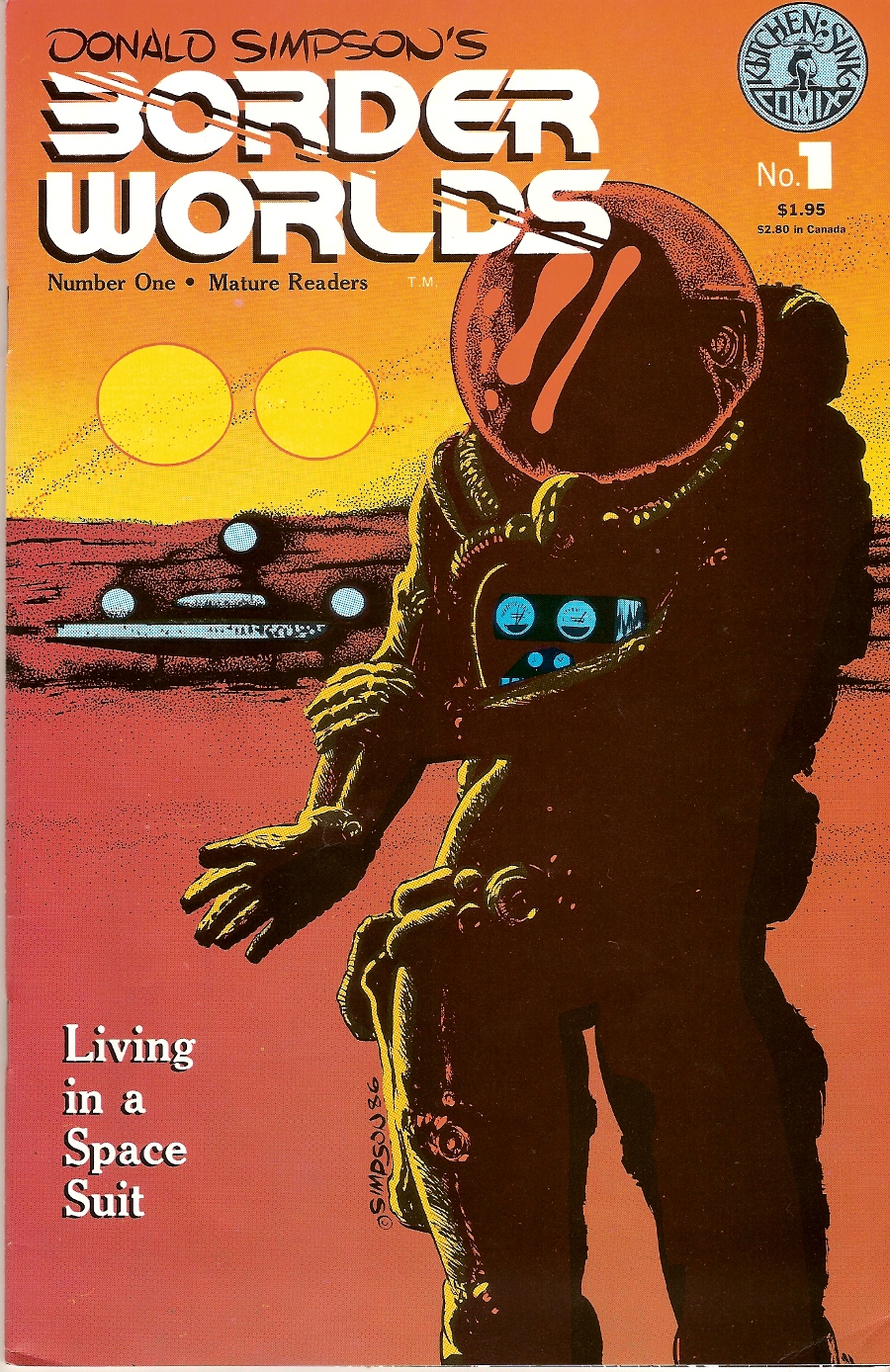 Last week, I discussed Don Simpson’s superhero parody, Megaton Man, which initially ran for 10 issues in the mid-80’s from Kitchen Sink. Starting with issue #6, Â Simpson introduced a back-up feature to Megaton Man, a straight science-fiction adventure titled Border Worlds.
Last week, I discussed Don Simpson’s superhero parody, Megaton Man, which initially ran for 10 issues in the mid-80’s from Kitchen Sink. Starting with issue #6, Â Simpson introduced a back-up feature to Megaton Man, a straight science-fiction adventure titled Border Worlds.
Understand, this was really breaking the mold in some ways. Â Usually, the back-up feature was in roughly the same genre as the lead feature–comedy with comedy, adventure with adventure. Sometimes you would have a funny back-up feature with a straight adventure lead, but I can’t think of another example of a comedy lead feature with a straight back-up, especially something as cerebral and slow-moving as Border Worlds.
Border Worlds takes place on the space station Chrysalis in the Arcameon system, on the edges of known human space. Jenny Woodlore loses her job on Earth and, having no other prospects, accepts the invitation of her brother, Frank Skylore (he changed his name because ‘Woodlore’ sounded too Earthbound) to come work for him. When she arrives, she learns that Frank is in a dire situation; he is a useless drunk, and his space hauling company has no customers and only one working ship.
Scratch that. Make that no working ships, since he lent his good one to notorious scofflaw Rory Smash, who got it blown up with himself inside.
In this initial episode, Simpson draws Jenny as a kind of generically attractive woman and her brother Frank as a flat-headed Neanderthal. He also uses the odd format of four wide panels stacked atop each other for every page but one.
Jenny finds out Frank has been using money from an inheritance to keep his business afloat. However, half of the money (which is now gone) was technically Jenny’s, so Jenny decides to take over the business to recoup her losses. First order of business: retrieve Rory Smash’s infamous space hot-rod and use it to set up a taxi service between the planets in the system and Chrysalis.
One of their most prominent passengers is Dr. Beecher, who designed Chrysalis. He has been summoned back to the station from his retirement, because certain station personnel are worried that Chrysalis’s orbit is deteriorating. The station has only a few months left before it is destroyed. In the meantime, Lt. Pinsen of station security believes Rory Smash faked his own death, so she decides to go after the hot rod. End of back-ups.
Before we get to the regular series, I want to note two features of the back-ups that would be staples of the series. Number one, not much happens in those first 5 episodes. There’s a lot of set-up, with little pay-off.
And number two, Simpson was never able to settle into a groove. He was always trying to find his style. The four-panel stacked grid was abandoned after the initial episode. Characters evolved. Jenny’s face would grow thinner, with a long straight nose and a cleft chin, while Frank would become less caveman comedy relief, more ruggedly handsome male lead. The fifth episode is entirely narrated from Pinsen’s memoirs.
Megaton Man ended with issue #10, and the next month, Border Worlds debuted as its own book with the cover above. But opening up the issue was an odd experience, because this seemed like a very different book.
It was black-and-white, for one thing, beautifully rendered. That chiaroscuro effect would be continued for much of the series, predating Frank Miller’s Sin City by almost 5 years. Also, that nude shot on the opening splash page meant that the story had moved in a more adult direction. Although it seems disingenuous to call it a splash page, because as it turned out, the entire book is full of very large images. Instead of laying out the book a page at a time, the book is laid out in two-page spreads, with panels very often crossing the gutter.
The large images give the book a larger-than-life feel, but they also cause the story to move very slowly, since there are never more than 5 panels per two pages. Pinsen shuts down Jenny’s business, Jenny remembers having a brief affair with Dr. Beecher, and Pinsen reveals to her superiors that Rory Smash may still be alive.
Issue 2 finally introduces a little action to the plot, as two scientists attempt to flee Earth and are pursued by security forces. There is a lot of exposition delivered during a skyspeeder chase and fight in which Simpson lets his inner Kirby have a little fun.
Also notice the typical two-page layout here. The two scientists, a brother and sister, flee to Chrysalis, where they are supposed to be ferried to a planet by Rory Smash. Instead, they find Jenny, who decides to defy Pinsen and use the hot rod to run the errand, not knowing the system’s entire contingent of Earth’s fleet is looking to stop them (they’re carrying a secret of vital importance).
In issue 3, the group begins their attempt to flee the station, and Simpson has decided to experiment with the rendering. Instead of the lush flowing brushwork of the first issue, or his usual Kurtzman-esque feathering, he does a lot of cross-hatching reminiscent of European artists like  Jose Ortiz. And notice the space suits here; instead of the heavy blacks we’re used to, they’re now open outlines filled with Moebius-style canoodling.
In issue 4, Jenny and friends are forced to hide in the giant defunct engines of Chrysalis, pursued by Pinsen. Meanwhile, Dr. Beecher decides to help save Chrysalis from its impending doom, possibly by repairing and reactivating the engines. However, in issue 5, he meets resistance from Arcameon’s governor, who looks amazingly like a chimp.
In issue 6, the fugitives discover a hidden community of criminals and rebels living in the engines, and Simpson decides to abandon the lush two-page spreads for a rigid four-panel square grid, with the exception of a couple of splash panels and double-page spreads.
At least until issue 7, where the two-page layouts continue. Instead, Simpson is now setting aside his lush, dark ink renderings with occasional zip, and using duotone to create the impression of depth. He also uses a more manga-like approach, with several large establishing shots conveying the environment, making this slow-moving story even more leisurely.
Issue 7 teased the next issue, which was due in October 1987. It never came out. But then almost three years later, in 1990, an issue came out titled Border Worlds: Marooned, which numbered itself Volume 2, Number 1. Also, the cover no longer stated “MATURE READERS,” but now said “ADULTS ONLY.”
The first eleven pages seemed to be drawn soon after issue 7. The layout had changed once again, from two-page layouts back to conventional single-page layouts, but without the rigid grids Simpson had experimented with in the first back-up and issue 6. But the characters look mostly the same, and Simpson is still using the duotone board.
And then, on page 12, out of nowhere, we get a multiple-page sex scene between Jenny and fugitive Drake Revell, with explicit penetration (this issue was published in the same timeframe that Simpson published Wendy Whitebread: Undercover Slut with Eros Comix under the pseudonym Anton Drek, so sex was on his mind).
And after that brief interlude, it’s like years have gone by. The duotone is suddenly gone, and the characters all begin to look weird, distorted and off-model, as if Simpson has forgotten how to draw them. The layouts undergo a change as well, with characters and objects now frequently overlapping the panel borders, which doesn’t happen at all before page 20, but happens on almost every page thereafter.
The issue ends with the fugitives betrayed. The scientists are taken into custody by Lt. Pinsen, while Rory Smash (who is indeed still alive) makes off with his hot rod. Jenny and her brother are abandoned in the underground. Jenny manages to make her way to the surface to ask Dr. Beecher to intercede for Drake, only to discover that Beecher–so far unsuccessful in his attempts to save the station–has left.
And that was it. Although the editorial on the inside front cover promised that Simpson would continue the story at irregular intervals, no more issues ever appeared. Simpson instead retreated back to the safe haven of Megaton Man and other hero parodies before leaving comics altogether.
And on the one hand, it’s too bad, because like D’Arc Tangent, the story was a rare piece of serious science-fiction with adult characters in an industry full of shallow action stories starring overgrown children (and I say that with love).
But on the other hand, it was obvious that Simpson seemed to be in over his head and never really got comfortable enough with the story to just let it flow. With every issue, there always seemed to be a sense of “this is pretty good, but when is it going to kick into high gear and get really good?” And it would have been really disappointing to get to the end and never see that potential realized.


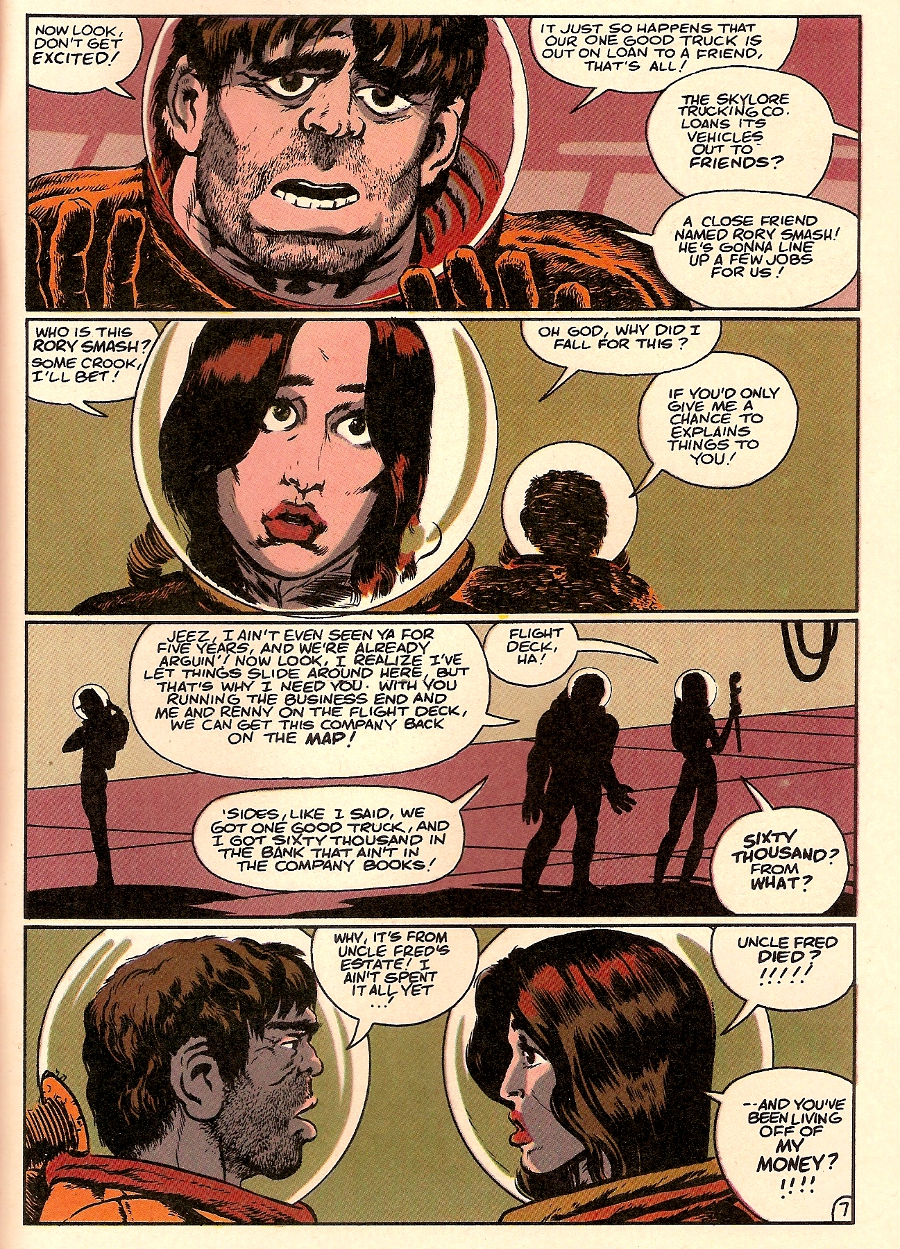
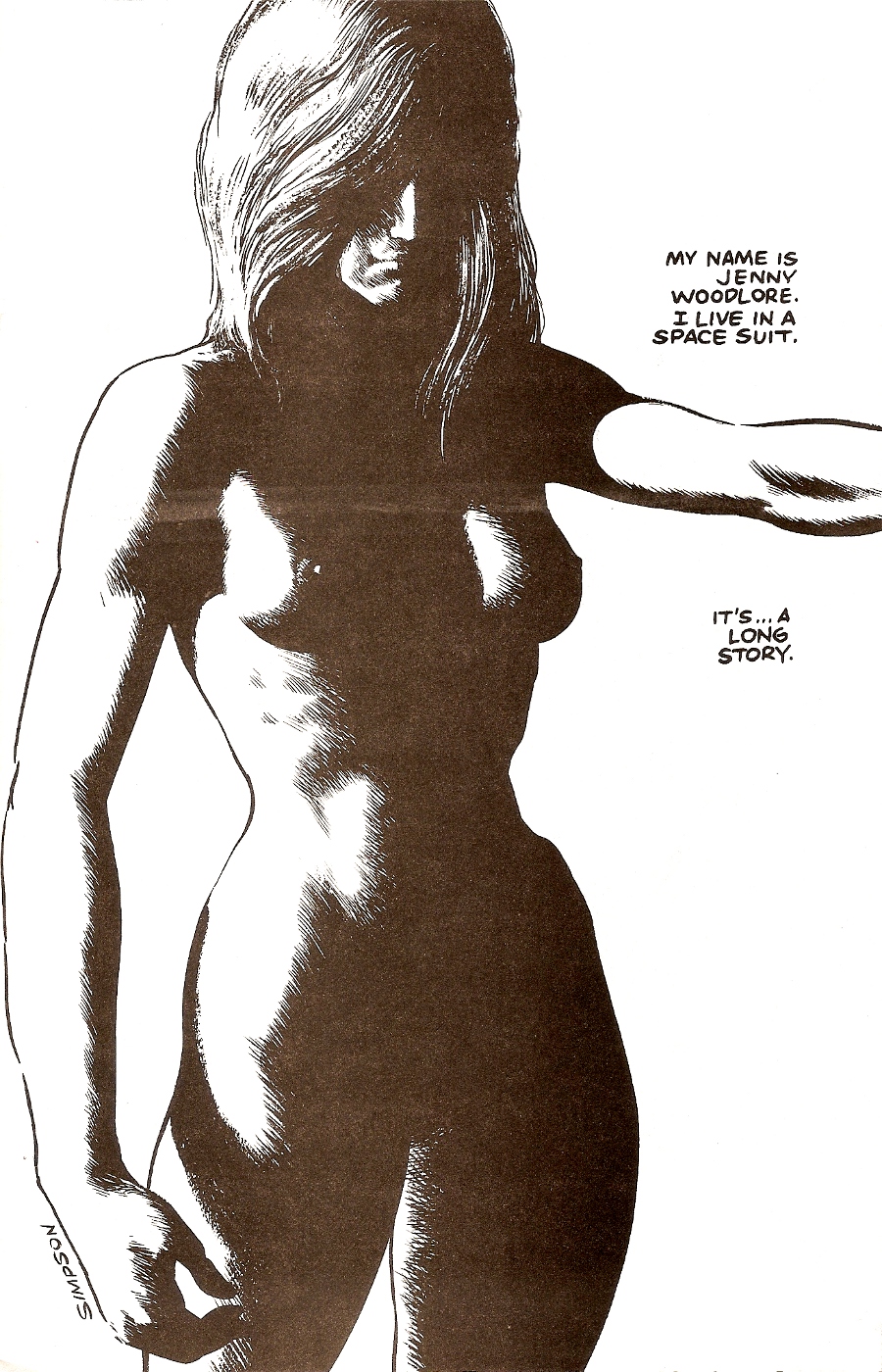
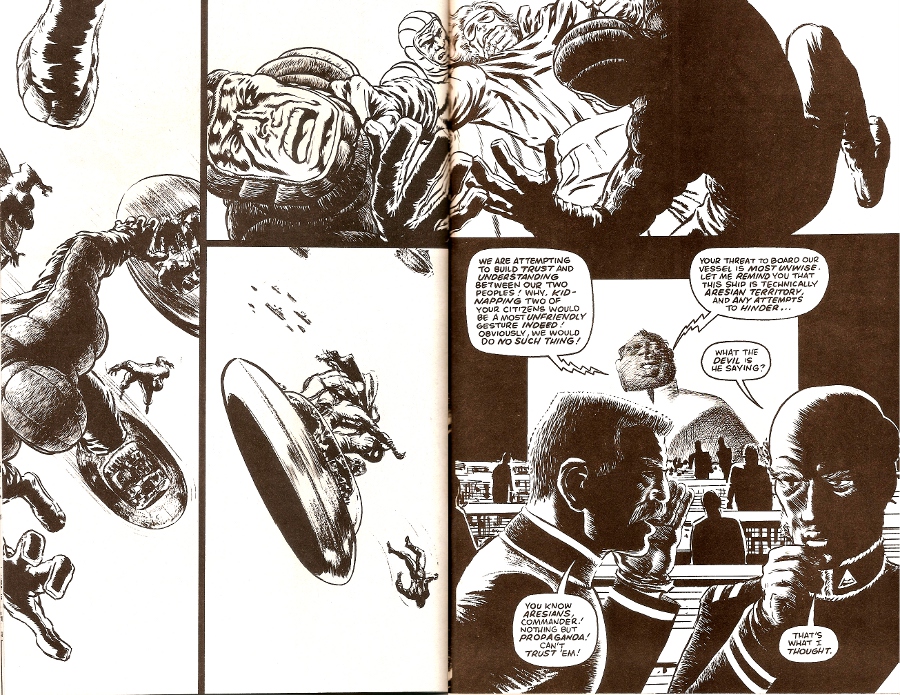
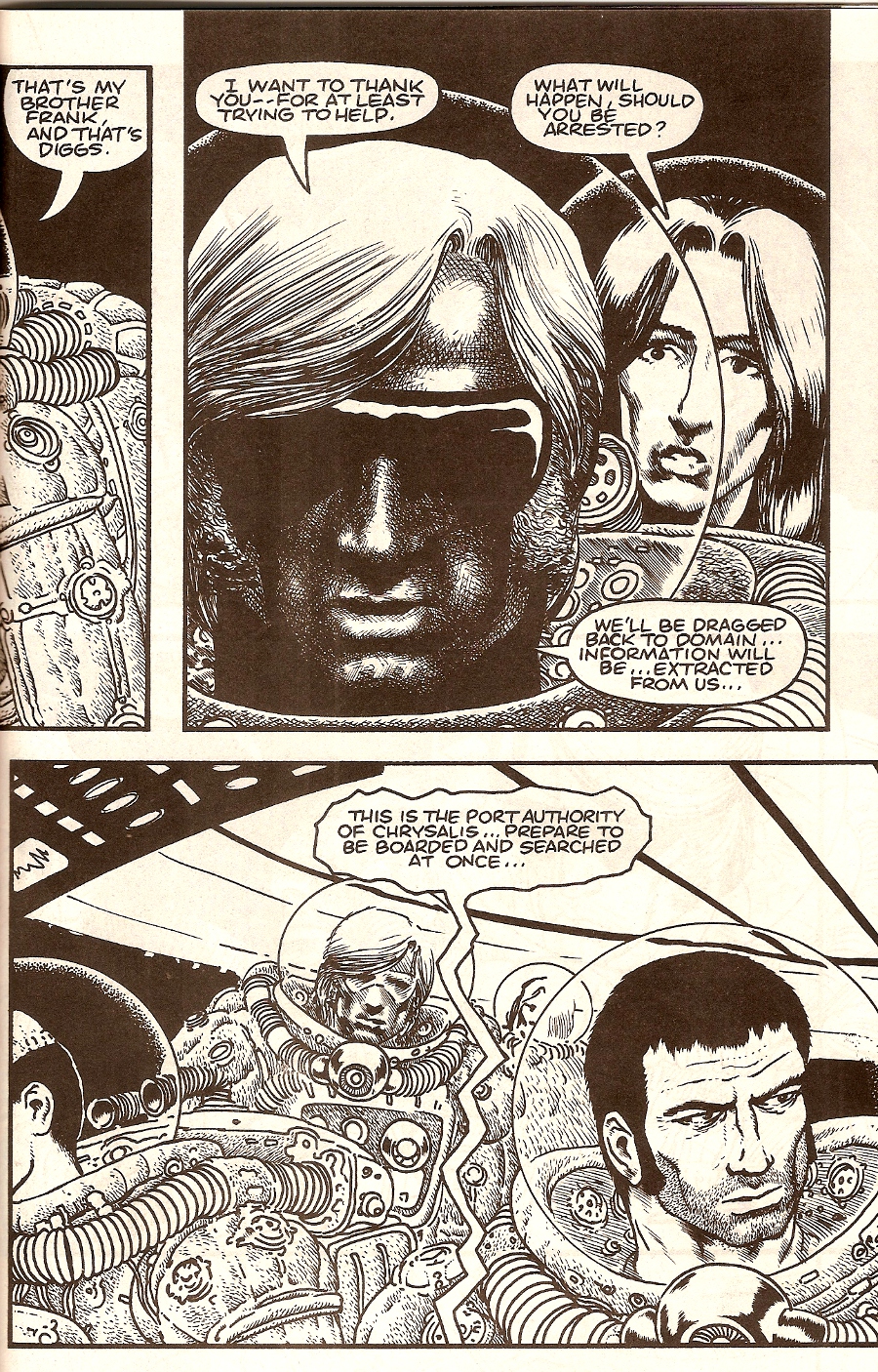
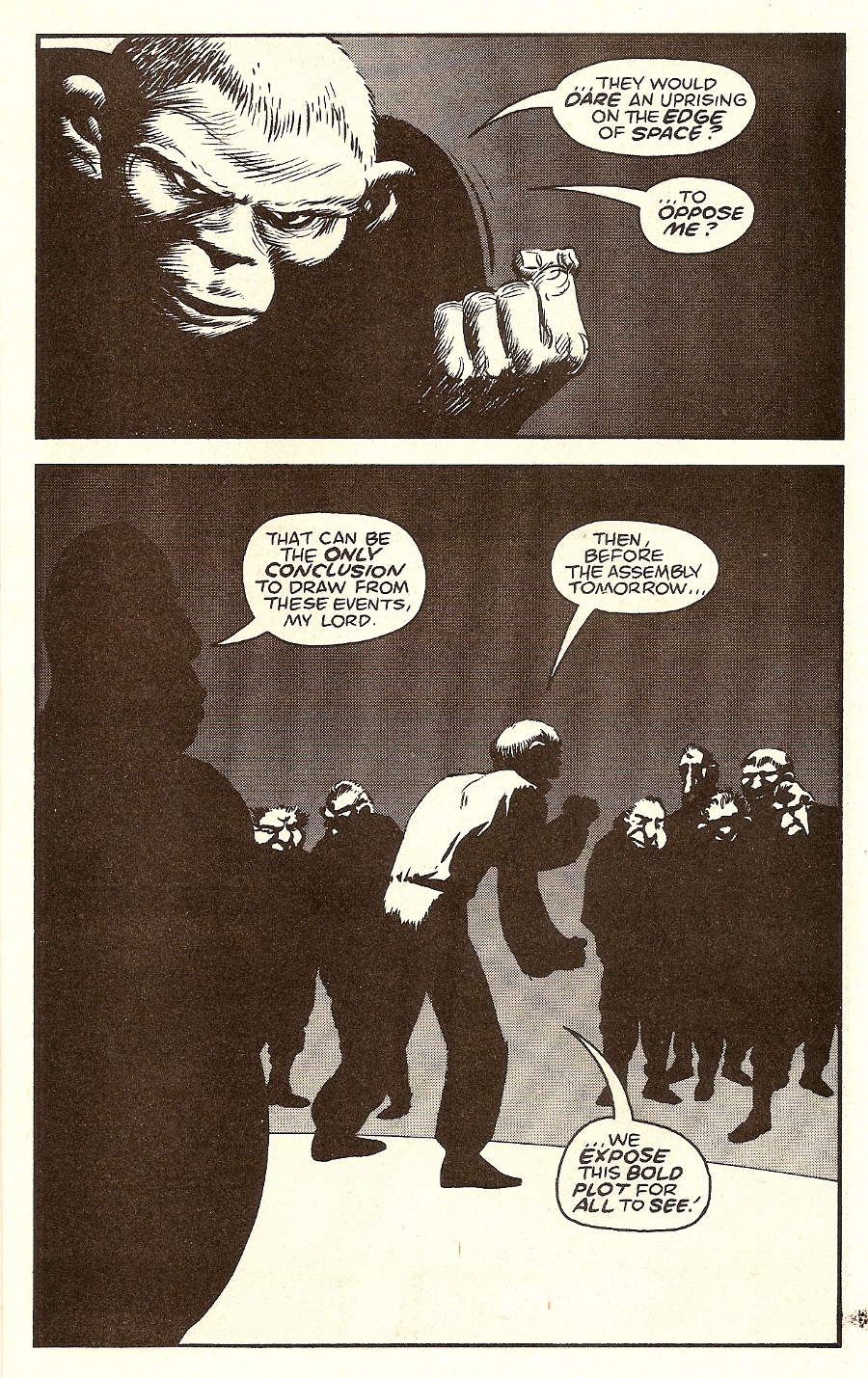
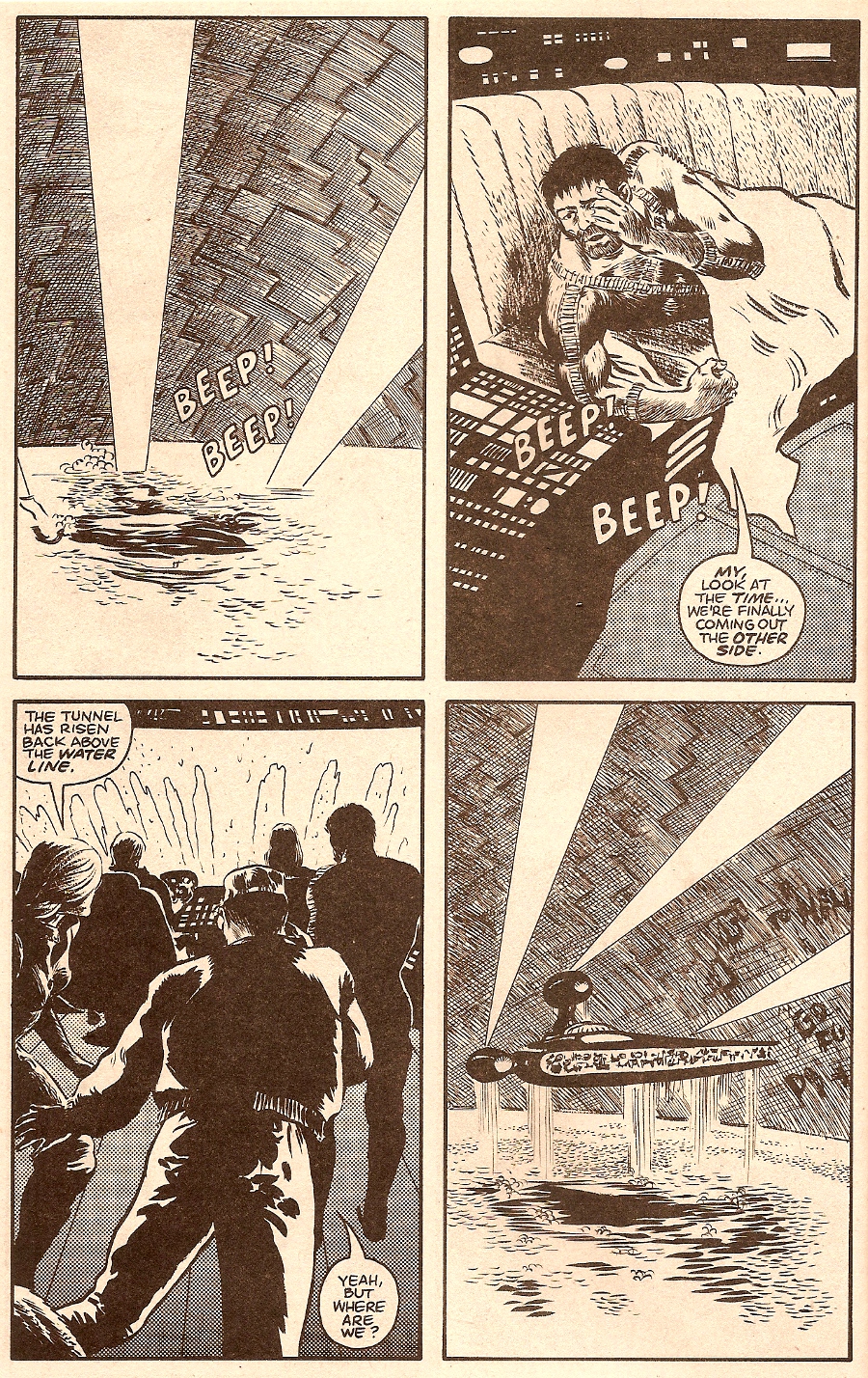

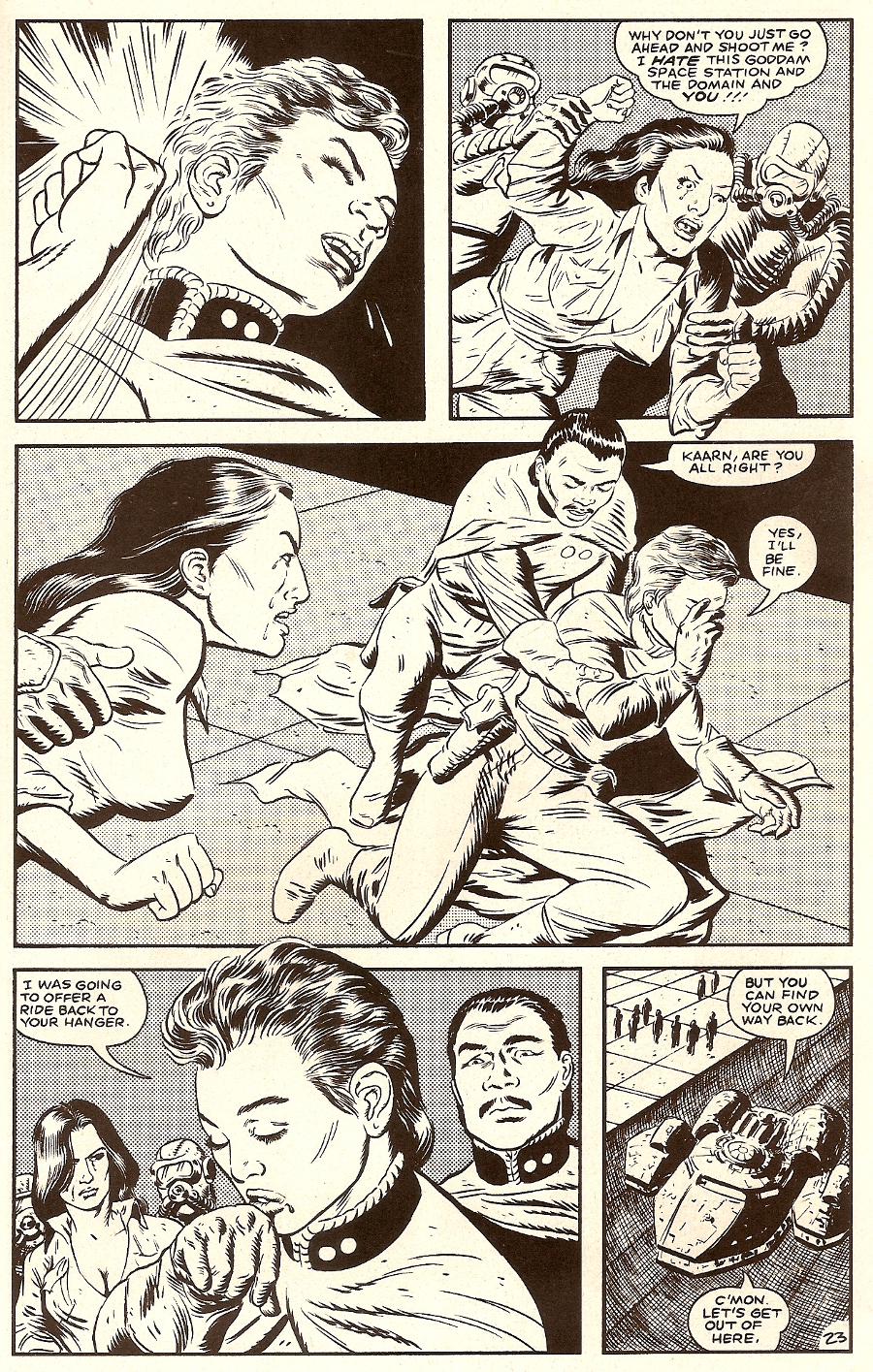



Thanks for this great recap of the “Border Worlds” saga.
You may like to know that one year ago (2017.08) Don Simpson published an hardcover version with (at long last) the end of the story:
https://www.comixology.com/Border-Worlds/digital-comic/511872
Preview here:
http://www.graphic-design.com/design-bookshelf/Border_Worlds/index.html
That looks interesting. I may have to check it out.